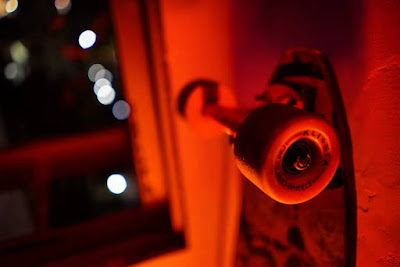Portrait Photography
Although now the large percentage of mobile devices have at least two cameras to create the famous Bokeh effect, this is nothing more than two photos, one out of focus and one in focus, taken at the same time with two cameras, the idea of this is that with an AI the SmartPhone can give that touch to a professional camera since it only leaves the object that we are aiming or the person we are trying to photograph "focused", without a doubt it is a quite great effect and with which you can play a good little while.
But how to achieve this effect with a professional camera? Well, this is not so complicated and here I go with the subject of the title, it happens that in the sets of our camera in manual we will always have the most important parameters when taking a photo, these are the Shutter speed, the Diaphragm which is represented by a letter "F" and finally the ISO
For now we are only going to stay with the first two parameters that would be the shutter speed and the diaphragm, as I said in a previous text, the shutter speed is how long the camera lets light enter the sensor of our camera, for example a photo with 1/8000 shutter speed is a high value therefore the time that light enters our sensor would be less, but if instead we have a photo with 1/5 'or more than 2 "it would be a fairly bright photo therefore you should be with a tripod if you don't want it to be shaken even a millimeter, at least on my camera I can go up to 30 "shutter speed and after that it has the Bulb mode which is to keep the shutter pressed as long as we need.
Okay, now let's talk about the diaphragm, in simple words, taking it to the human eye is how our pupil dilates and contracts so that more or less light enters depending on the situation, in our camera this is normally seen as an F, for example F1. 8 is when our lens has the diaphragm super open, instead a higher value such as F22 is when our diaphragm is super closed, therefore it lets in less light.
So what good is the iris in a portrait photograph?
Okay, after having made the above clear, we are going to know how we can create the "bokeh effect" or "blur effect", it happens that by having a more open diaphragm the light that enters the lens reaches the sensor from all directions, therefore we will have less depth of field, instead with a more closed diaphragm there would be more depth of field, so the more light or more open our diaphragm is, the less depth of field and the less light or more closed our diaphragm is, the more depth of field.
Examples of photos of me
28mm / F2.0 / 1/100 / ISO 1250
What would be the ideal parameters for a portrait with a bokeh effect? Well, assuming that the ideal would be to have a fixed lens such as a 50mm or a 35mm, although I use an 85mm and it works perfectly, after this we should try to have a diaphragm. The widest possible can be F1.2 / F1.4 / F1.8 and since it is a fairly bright aperture to have the shutter speed over 1/100, the ISO is a value that I always recommend to have as low as possible in all Sometimes, in my case that my camera has a Full Frame sensor, I can upload it up to 5000 without problems of having grain to the point of having to edit the photo afterwards.
Well this has been for today's blog, if you have any questions or anything let me know in the comments, remember that I do not have a professional degree in Photography, it is only my hobby.



Comentarios
Publicar un comentario